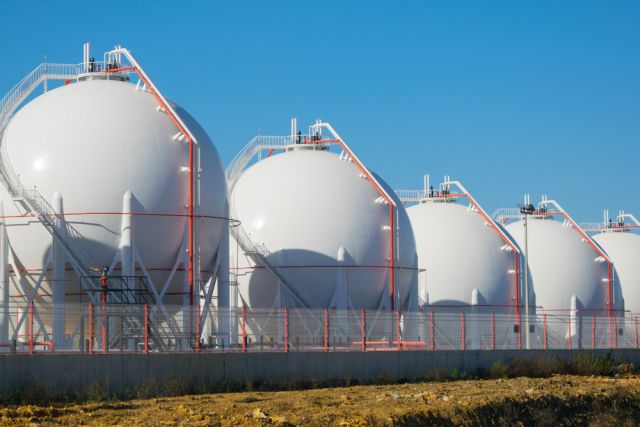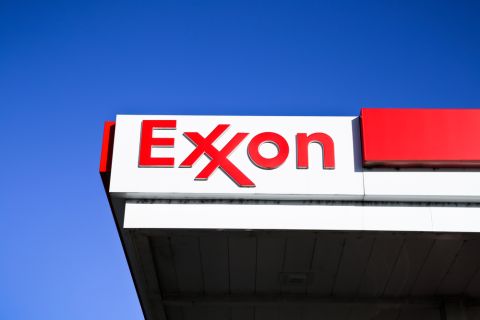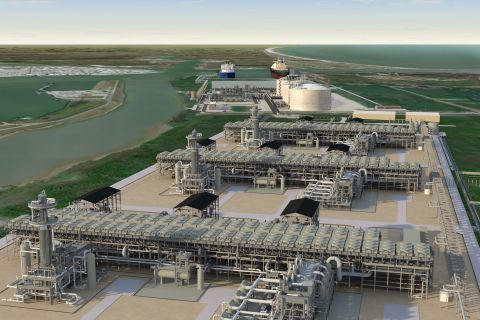
Thanks to a combination of continued shale development and warm weather, gas storage is well above normal levels and prices have continued to fall. (Source: Shutterstock)
The U.S. natural gas market is transforming into a global behemoth, and U.S. energy companies will face increasing pressure to grow to survive, Chesapeake Energy CEO Nick Dell’Osso said at the Feb. 7 NAPE Energy Business Conference.
Hopefully, U.S. political leaders will come to grips with what’s ahead, he said.
Last month, Chesapeake and Southwestern Energy announced a $7.4 billion merger that will create the largest natural gas production company in the U.S. once the deal is finalized.
Dell’Osso, who joined a NAPE panel discussion in Houston, discussed continuing volatility in the natural gas market. The panel focused primarily on the international LNG market and the need for the U.S. to have an overall strategy as it develops.
The Chesapeake CEO said the massive growth of supply and demand for U.S. LNG was a major factor in his company’s decision to merge with Southwestern. He expects to see other gassy E&Ps making similar decisions in the M&A market.
“We would expect there to be more consolidation, and the reason for that is that natural gas produced out of the United States is becoming competitive on a global scale as we connect U.S. resources with global markets through export capacity,” Dell’Osso said.

“A global business [market] is harder to compete in as a smaller company. That fact alone drove a lot of the thinking about our merger, and I suspect it will drive a lot of other companies to behave similarly.”
The U.S. gas market finds itself in a strange position, said Samantha Dart, a senior research strategist for Goldman Sachs.
Thanks to a combination of continued shale development and warm weather, gas storage is well above normal levels and prices have continued to fall. On Feb. 7, Henry Hub prices fell below $2/MMBtu.
Dart predicted production levels would finally fall over the next month.
“When we think about when those declines start to show, we would expect them to start to show this quarter,” she said.
In the meantime, most of the industry remains bullish on natural gas because of the explosive growth of LNG exports. Starting in 2025, U.S. export capacity is expected to more than double by 2027, even with a pause on new LNG export facilities implemented by President Joe Biden’s administration in January.
Train wreck ahead?
Both Dell’Osso and Mercator Energy President John Harpole expressed concern about fallout from the LNG pause.
Harpole said he was worried that U.S. leaders aren’t connecting the dots on the future natural gas industry that exports to Europe and Asia and supplies electric utilities. The country needs to get serious about its pipeline infrastructure if it wants to keep up with a continually growing demand, he said.
Harpole said he’s talked to many utility companies that are focused on the wrong projects.
“In order to back up that wind and solar, you need to expand your commitment to this infrastructure to deliver gas to your utility,” Harpole said. “I think in some of the blue states the utility commissions are saying ‘No, this utility commission will not allow us to invest in fossil fuel infrastructure.’
“I see a train wreck coming for these utilities who don't.”
Dell’Osso said the U.S. gas market is currently in an unstable position because it’s difficult to get leaders to understand that the market has changed. Most producers are working toward a business model that depends on LNG exports while grappling with decisionmakers outside of the industry who are reluctant to build the infrastructure necessary to support local communities.
It hasn’t been a problem so far, he said, because the country is currently awash in natural gas supplies.
But the government lacks a coherent policy to deal with the changes in the industry, Del’Osso said.
“I think this is an area that we as an industry have been able to avoid dealing with for a while, because we have basically had excess supply solving the problem,” he said.
Recommended Reading
Exxon’s Guyana Gas Project a “Win-Win,” Set for Hook-up by Year-end ‘24
2024-04-26 - Exxon Mobil Corp. CEO Darren Woods said the company’s gas-to-power project in Guyana as a “win-win proposition particularly for the people of Guyana” when completed and hooked-up by year-end 2024.
Segrist: The LNG Pause and a Big, Dumb Question
2024-04-25 - In trying to understand the White House’s decision to pause LNG export permits and wondering if it’s just a red herring, one big, dumb question must be asked.
Texas LNG Export Plant Signs Additional Offtake Deal With EQT
2024-04-23 - Glenfarne Group LLC's proposed Texas LNG export plant in Brownsville has signed an additional tolling agreement with EQT Corp. to provide natural gas liquefaction services of an additional 1.5 mtpa over 20 years.
US Refiners to Face Tighter Heavy Spreads this Summer TPH
2024-04-22 - Tudor, Pickering, Holt and Co. (TPH) expects fairly tight heavy crude discounts in the U.S. this summer and beyond owing to lower imports of Canadian, Mexican and Venezuelan crudes.
What's Affecting Oil Prices This Week? (April 22, 2024)
2024-04-22 - Stratas Advisors predict that despite geopolitical tensions, the oil supply will not be disrupted, even with the U.S. House of Representatives inserting sanctions on Iran’s oil exports.




